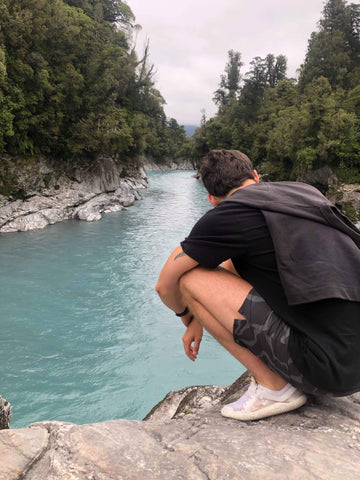Minimalist shoes allow our feet the ability to move, function and thrive, how nature intended.
Our feet are intricate pieces of anatomy that carry us through life and are often an afterthought when it comes to health and wellbeing. Shoes should resemble our feet, narrow heel, deeper through the middle of the foot and broad at the widest part of our feet, the toes. They should also be flat to allow our Achilles to lengthen, and thin to feel the ground and move freely.
McDougall’s book, ‘Born to Run’ inspired a new generation of barefoot runners; with his captivating stories about the Tarahumara tribes extraordinary running feats. Yet McDougall states clearly, ‘… all humans, even the Tarahumara are not born knowing how to run’.
Humans bipedal inclination, narrow pelvis, abundant sweat glands and big toes have provided us with the foundation to weather the rigours of long-distance running. We must learn to run, through observation and by cultivating a sensory awareness of how we feel, through movement.
Running is the most popular physical activity performed worldwide, promoting physical and mental wellbeing, but with 19 to 79% of runners injured each year, where did we go wrong? Injury rates amongst runners are steadily trending upwards despite the technological improvements in cushioning, supportive and responsive running shoes.
With the recent boom in Minimalist and Barefoot footwear, in theory, this should be injury preventive; moving towards our ancestral ability to run, but why are we still getting injured?
Despite doing and wearing what is primitive and evolutionarily logical, western culture promotes a comfortable lifestyle, our feet have been crippled by narrow, heeled and supportive shoes and with it, our ability to run pain-free.
Transitioning to minimal shoes should be a slow and deliberate process. We have 26 bones, 33 joints, 19 muscles, 10 tendons and 107 ligaments and we need to let these intricate structures rebuild strength and resilience, through progressive exposure to being barefoot.
The mantra, ‘walk before you run’ is such a simple, yet profound strategy to barefoot running, slowly allowing the amazing anatomy of our feet to regain their former glory.
This long-term perspective on transitioning is imperative to mitigate injuries from changing footwear, allowing the body to adapt and respect the process. In the artificial world, we live in; protection for our feet is paramount along with warmth and adhering to ‘social norms’; necessitating shoes for the majority of the time.
Shoes that let your feet be ‘barefoot’ should have these three assets; thin and flat sole, wide fit and all-round flexible like Vivobarefoot shoes.
If you’re curious to learn more, or have questions about the evidence-backed statements in this opinion piece, come in a store to discuss with Liam Heilberg our resident Osteo student.

Liam demonstrating a benefit of good feet health - squatting.
(even better with a view) 🌏 New Zealand
👟 wearing // VIvobarefoot Primus Lite White

